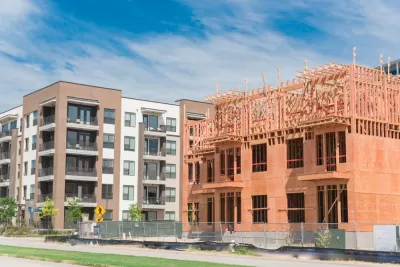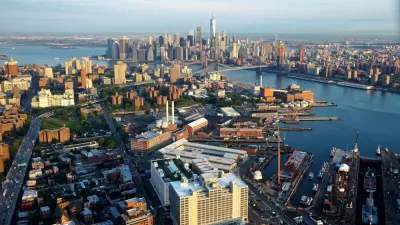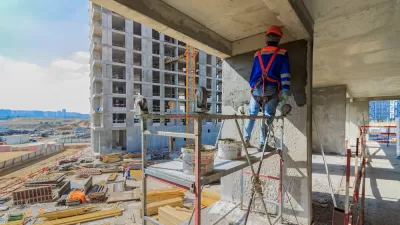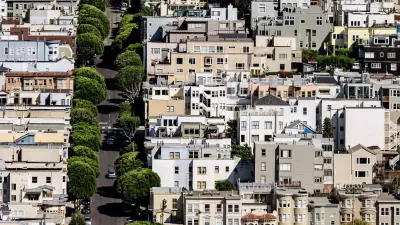A study that made the rounds as a working paper at the beginning of 2019 has now been published in a peer-reviewed journal.

A study years in the making has added a new reference in the debate about the effects of large new apartment developments on low-income neighborhoods located nearby.
The study, titled "Local Effects of Large New Apartment Buildings in Low-Income Areas," was published by The Review of Economics and Statistics on May 6, but the research first attracted attention it the beginning of 2019. Planetizen blogger Michael Lewyn introduced the research findings (in what was then a working paper) as potential ammunition for the YIMBY response to rising housing costs in large cities with restrictive zoning codes and low amounts of residential development.
Now published in a peer-reviewed journal, the research finalizes its findings, as summarized in the study's abstract: "New buildings decrease rents in nearby units by about 6 percent relative to units slightly farther away or near sites developed later, and they increase in-migration from lowincome [sic] areas."
The researchers argue that new apartment developments achieve price reductions in nearby neighborhoods by absorbing high-income households and increasing local housing stock. "If buildings improve nearby amenities, the effect is not large enough to increase rents. Amenity improvements could be limited because most buildings go into already-changing neighborhoods, or buildings could create disamenities such as congestion," reads the abstract.
For more of the latest on the subject, researchers at the University of California, Los Angeles recently published a survey of recent research on the consequences of new development for local housing markets.
FULL STORY: Local Effects of Large New Apartment Buildings in Low-Income Areas

Planetizen Federal Action Tracker
A weekly monitor of how Trump’s orders and actions are impacting planners and planning in America.

Congressman Proposes Bill to Rename DC Metro “Trump Train”
The Make Autorail Great Again Act would withhold federal funding to the system until the Washington Metropolitan Area Transit Authority (WMATA), rebrands as the Washington Metropolitan Authority for Greater Access (WMAGA).

The Simple Legislative Tool Transforming Vacant Downtowns
In California, Michigan and Georgia, an easy win is bringing dollars — and delight — back to city centers.

In These Cities, Most New Housing is Under 441 Square Feet
With loosened restrictions on “micro-housing,” tiny units now make up as much as 66% of newly constructed housing.

Albuquerque’s Microtransit: A Planner’s Answer to Food Access Gaps
New microtransit vans in Albuquerque aim to close food access gaps by linking low-income areas to grocery stores, cutting travel times by 30 percent and offering planners a scalable model for equity-focused transit.

This City Will Pay You to Meet Your Neighbors
A North Kansas City grant program offers up to $400 for residents to throw neighborhood block parties.
Urban Design for Planners 1: Software Tools
This six-course series explores essential urban design concepts using open source software and equips planners with the tools they need to participate fully in the urban design process.
Planning for Universal Design
Learn the tools for implementing Universal Design in planning regulations.
Smith Gee Studio
City of Charlotte
City of Camden Redevelopment Agency
City of Astoria
Transportation Research & Education Center (TREC) at Portland State University
US High Speed Rail Association
City of Camden Redevelopment Agency
Municipality of Princeton (NJ)





























